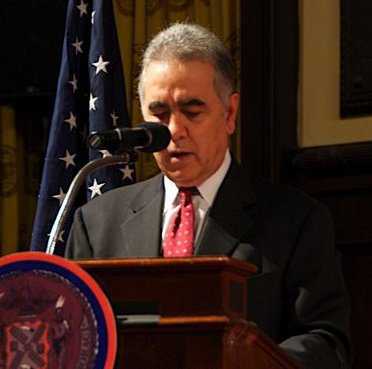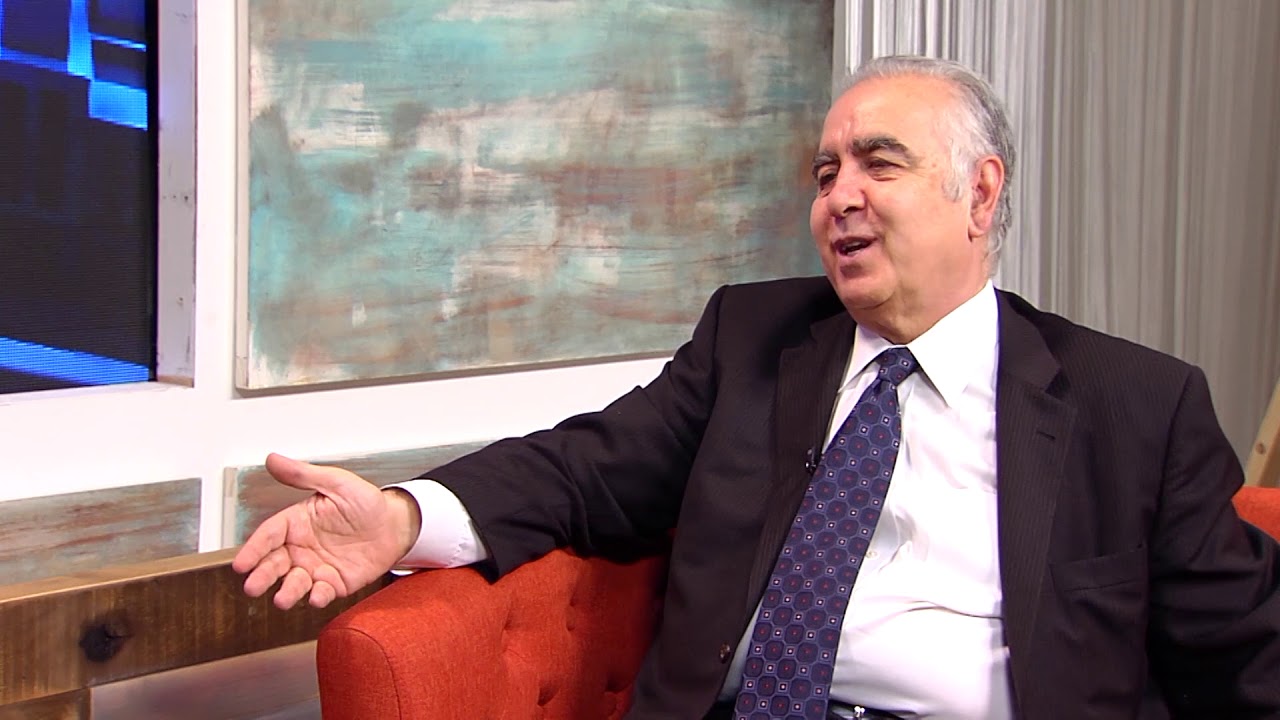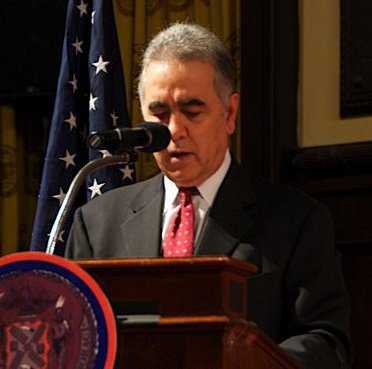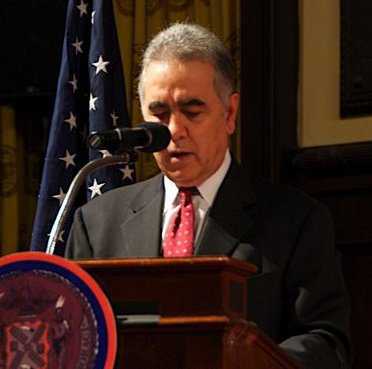Publisher, The California Courier 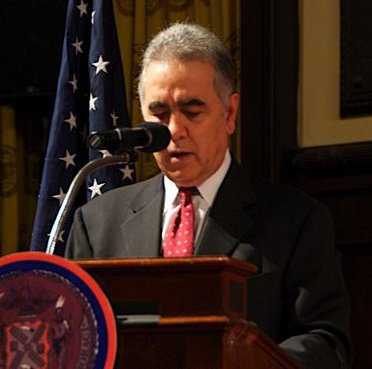 FOX-TV (Los Angeles) invited this writer for a live in-studio interview on the Armenian Genocide for two consecutive days. The first, lasting 5 minutes, took place on April 24, during the TV station’s evening news program. The second, lasting over 6 minutes, took place on April 25, during the Good Day LA Show. Below are excerpts from both interviews:
FOX-TV (Los Angeles) invited this writer for a live in-studio interview on the Armenian Genocide for two consecutive days. The first, lasting 5 minutes, took place on April 24, during the TV station’s evening news program. The second, lasting over 6 minutes, took place on April 25, during the Good Day LA Show. Below are excerpts from both interviews:
April 24, 2011 FOX-TV: Joining us now is Harut Sassounian, the president of the United Armenian Fund. He’s also publisher of the California Courier, a newspaper here in Southern California, published out of Glendale. It is the 96th anniversary of the Armenian Genocide. And it’s also kind of a confusing issue for a lot of us, because Armenian-Americans want the president to say, to claim that this was genocide. And yet, you just told me prior to coming on the newscast that really it doesn’t matter whether the president says it or not. Why? SASSOUNIAN: Because we already have another president, Ronald Reagan, 30 years ago in 1981, who issued a presidential proclamation in which he mentioned the words Armenian Genocide. Plus, we have two congressional resolutions, in 1975 and 1984, commemorating the Armenian Genocide.
FOX-TV: Mr. Sassounian, then one would ask, and people who are not that familiar with the 1915 genocide would say, why are you protesting out in front of the Turkish consulate? SASSOUNIAN: We are simply protesting to let the president know, and every other politician know that if you come to us as a candidate and make [empty] promises and later on you get elected with our votes and money, we’re not going to just remain silent, we’re going to express our disagreement and we’re going to make sure that you’re not re-elected.
FOX-TV: It’s not then good enough to have just the proclamation by Pres. Reagan; to have the Dept. of Justice write in a 1951 paper that it was genocide. You want that confirmed by the current administration? SASSOUNIAN: It would be nice if they confirm it, but we are trying to send a message to the president and all politicians that if you make a promise to the people, you have to keep your promise. You can’t make a false promise, get their money, get their votes, and then act like nothing happened! They have to pay a price! We have to change the whole political charade in this country where you just lie to the public and get away with it.
FOX-TV: With Turkey being such a strategic ally of the United States, do you expect any president now or after this to come out and say, “The Ottoman Empire committed genocide against Armenians?” SASSOUNIAN: There is a big difference between politics and historical facts. Historical facts do not change with time. If an event happened, it happened! …So our alliances or relationships, good or bad, should not affect the facts of history.
FOX-TV: Yesterday Armenian boxer Vic Darchinyan, on his trunks, when he was in the ring, were in big numerals 1915, and on a sports blog, the blogger said “In case you haven’t heard about the Armenian Genocide …” and then started to explain it. Does it upset you that so many people outside of Armenian-Americans really are ignorant about this? SASSOUNIAN: That doesn’t upset me because most people don’t know much about the world. They don’t follow the news very closely, as some of us do. What upsets me more is when you said at the top of the introduction of this news item “Armenians claim genocide.” Armenians are not the ones claiming genocide. The whole world knows there was a genocide. Hundreds of historians, 43 US states, Congress twice, President Reagan, 25 different countries have passed parliamentary resolutions. Just because Turkey, the successor of the criminal regime, denies it, that doesn’t make it an allegation or a claim. It’s a historical fact. For political reasons, Turks don’t want to face up to their own history.
FOX-TV: And I think that was written, we were reporting that for the purpose of showing the contrast between Armenians and Turks. And yet, your point is well taken. Thank you for the correction.
April 25, 2011 FOX-TV: Yesterday around the world, [there were] commemorations of the Armenian Genocide in 1915 — a very controversial historical event — perhaps a million and a half people died or were killed as a result of this. Joining us now is Harut Sassounian. He is the president of the United Armenian Fund and editor of the Armenian newspaper, the California Courier. We do this every year. The issue at stake is that the United States government, this president, the last president, the president before, all ran making big statements saying that the Armenian Genocide will be recognized as a genocide like the Holocaust around World War II. All three presidents run, all three presidents when they get into office, they look at Turkey, an ally we need badly in the Middle East, and they don’t do it.
SASSOUNIAN: In general, politicians are all very bad in keeping promises on all subjects. But when it comes to this subject, there’s a little unfortunate situation where people confuse politics with history. You can remain good friends, good allies, with Turkey, but at the same time not change historical facts…. So we should not mix up politics and history. We should be truthful about facts, but we can still remain friends, trade, and maintain military relations.
FOX-TV: Let me just play the devil’s advocate, as if I’m representing the president at this point. Yes, that’s true, but where I sit right now, the world where it is, leaves us in a position where we do not want to insult Turkey and they’ve made it very clear to us that they would be deeply insulted. SASSOUNIAN: First of all, this was done by the Ottoman Empire and not the Republic of Turkey which didn’t exist at the time. Secondly, Germany has no problem acknowledging what the Nazi regime did. There’s no reason why today’s Turkey should not acknowledge what was done by its predecessor….
FOX-TV: Turkey has become more and more important to us as the years go on. SASSOUNIAN: It has become more important and recently it has become a serious problem for us because they’ve become more of a radical Islamic regime; they strengthened their ties with Iran and Syria and various other radical regimes.
FOX-TV: And I believe the administration is afraid of pushing them more into that camp, if they take the step of recognition.
SASSOUNIAN: This is the problem because we compromise our principles, our values, because of geopolitical considerations. We have to separate them. We have to say here are the facts, here’s history, here are our values, and you have to live with it. The more we cater to dictators, people who deny the facts of history, the more they’re going to be demanding from us.
FOX-TV: And you know in history the Ottoman Empire, which fell right after that, the Turks say “not a genocide, it’s the fog of war, people died from war, people died from disease, it wasn’t planned, so therefore it wasn’t a genocide,” and you say…
SASSOUNIAN: There are hundreds of historians, experts on the Holocaust and the genocide who have signed a unanimous letter saying it was genocide. We have court cases, we have the United Nations, we have the European Parliament that recognized the genocide, so many countries, U.S. states, and Pres. Reagan himself said it was genocide.
FOX-TV: I know you want recognition — there has been some — but maybe not enough. What else is it that you would want? SASSOUNIAN: In fact, what we want is not really recognition, because from my point of view the world knows it was genocide. Some people don’t want to say it publicly. But what we really want is…we lost a lot beyond the people who were killed — we lost our culture, our churches, our lands, and our personal properties. Every Armenian had houses, farms, properties, and bank accounts. We’ve lost all of that. So my intent is to go to court — the World Court, the European Court, and U.S. Federal Courts. We want Turks to pay reparations, restitution and bring justice back for this massive crime they’ve committed. That’s much more important to us than the lip service that any politician would pay to us.
FOX-TV: The fact that there isn’t that one level of official recognition keeps this topic very fresh. And to some extent there’s an advantage to that because we’re still talking about it all the time. SASSOUNIAN: You’re absolutely correct…let’s forget about Pres. Obama for a second. Even if the President of Turkey tomorrow morning would say it was genocide, most people around the world and maybe even some Armenians would say that we finally reached our objective, let’s move on. So maybe it’s a good thing that the Turks keep denying it.
